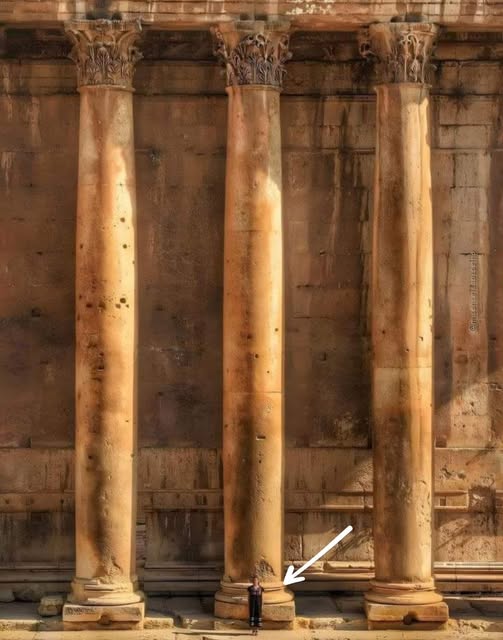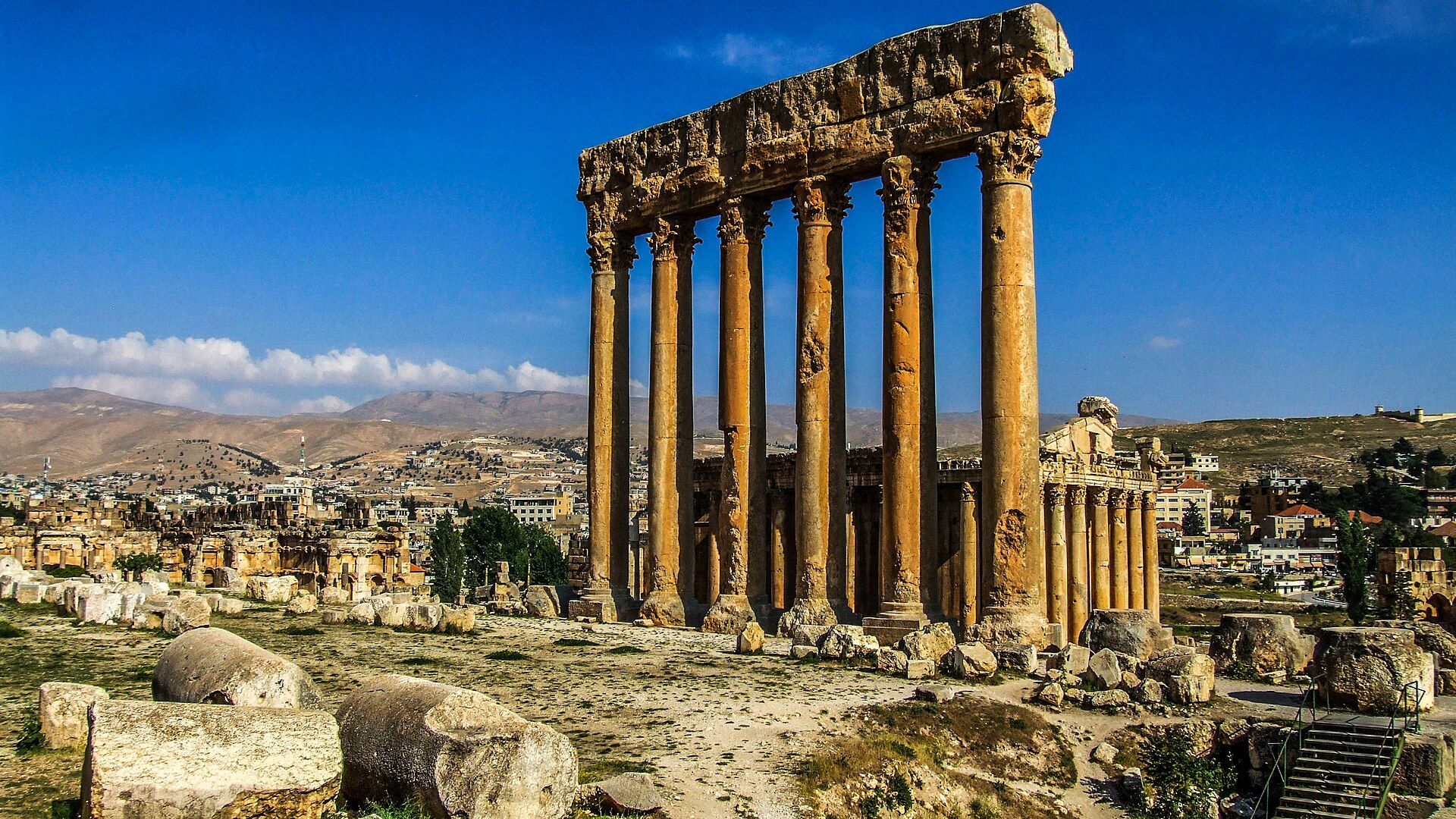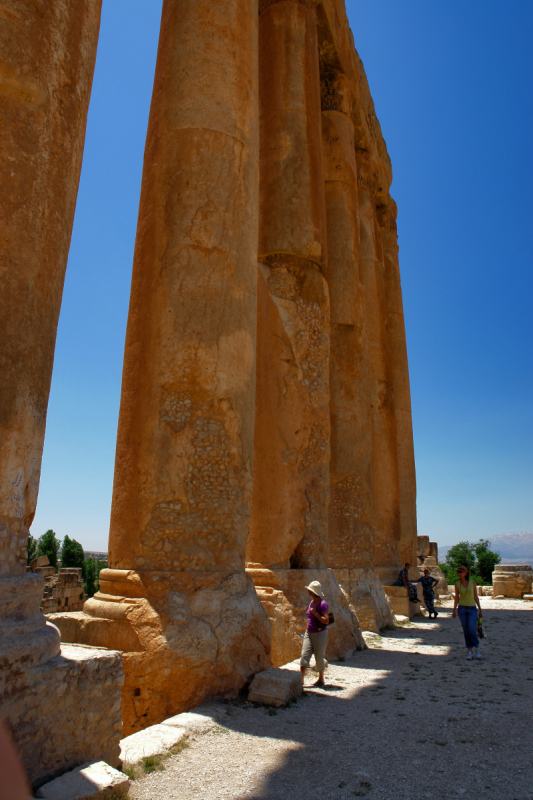The Temple of Bacchus in Baalbek, Lebanon, stands as a breathtaking testament to the grandeur and engineering prowess of Roman architecture. Its towering granite columns, each a monumental feat of construction and transportation, continue to inspire awe and wonder, prompting reflection on the preservation of such invaluable historical treasures.
A Monument to Roman Ingenuity:
The Temple of Bacchus, constructed between the 1st century BCE and the 3rd century CE, showcases the pinnacle of Roman architectural achievement.
- Architectural Grandeur:
- The temple’s 20-meter-high granite columns are among the most impressive examples of Roman architectural design.
- Their sheer scale and intricate detailing reflect the empire’s ambition and artistic sophistication.
- Engineering Feats:
- Each column, weighing up to 800 tons, represents a remarkable engineering achievement.
- Their precise placement and enduring stability speak to the Romans’ mastery of construction techniques.
- Logistical Triumph:
- The transportation of these massive columns over 1,000 kilometers from quarries in Egypt to Baalbek is a logistical feat of unparalleled scale.
- This journey highlights the Romans’ ability to organize and execute complex engineering projects.

A Legacy of Empire:
The columns of Baalbek are more than just architectural wonders; they are tangible reminders of the Roman Empire’s influence and ingenuity.
- Symbol of Power:
- The temple’s grandeur served as a symbol of Roman power and authority, projecting an image of strength and sophistication.
- It reflects the empire’s ability to command resources and execute ambitious projects.
- Cultural Influence:
- The temple’s design and construction reflect the Romans’ cultural fusion, blending elements of Roman, Egyptian, and local traditions.
- It showcases the empire’s ability to adapt and integrate diverse cultural influences.
- Historical Significance:
- The columns stand as a testament to a pivotal period in human history, when the Roman Empire reshaped the world.
- They offer valuable insights into the empire’s engineering capabilities, artistic achievements, and cultural values.
Preserving Ancient Masterpieces:
The preservation of these ancient columns is a crucial responsibility, requiring careful consideration and proactive measures.
- Threats to Preservation:
- Time, exposure to the elements, and human activity pose significant threats to the ruins’ integrity.
- Weathering, erosion, and seismic activity can damage the fragile structures.
- Conservation Strategies:
- Developing and implementing effective conservation strategies is essential to protect the columns for future generations.
- This includes careful cleaning, stabilization, and restoration efforts.
- Sustainable Tourism:
- Balancing tourism with preservation is crucial, ensuring that visitors can appreciate the site without causing further damage.
- Implementing sustainable tourism practices can help to minimize the impact of human activity.
- International Collaboration:
- Preserving such significant cultural heritage sites requires international collaboration and expertise.
- Sharing knowledge and resources can help to ensure the long-term preservation of these ancient masterpieces.
The colossal columns of Baalbek’s Temple of Bacchus are a remarkable testament to human ingenuity and the enduring power of ancient architecture. By prioritizing preservation and sustainable practices, we can ensure that these awe-inspiring structures continue to inspire and educate future generations.

CÁC TIN KHÁC
Mary Walton: The Forgotten Inventor Who Helped Clean Up America’s Cities
Tomb of Queen Nefertari in the Valley of the Queens, Egypt
Discover the Hypostyle Hall of the Temple of Hathor at Dendera
Venus de Losange: Unveiling the Mystery of a 20,000-Year-Old Paleolithic Icon